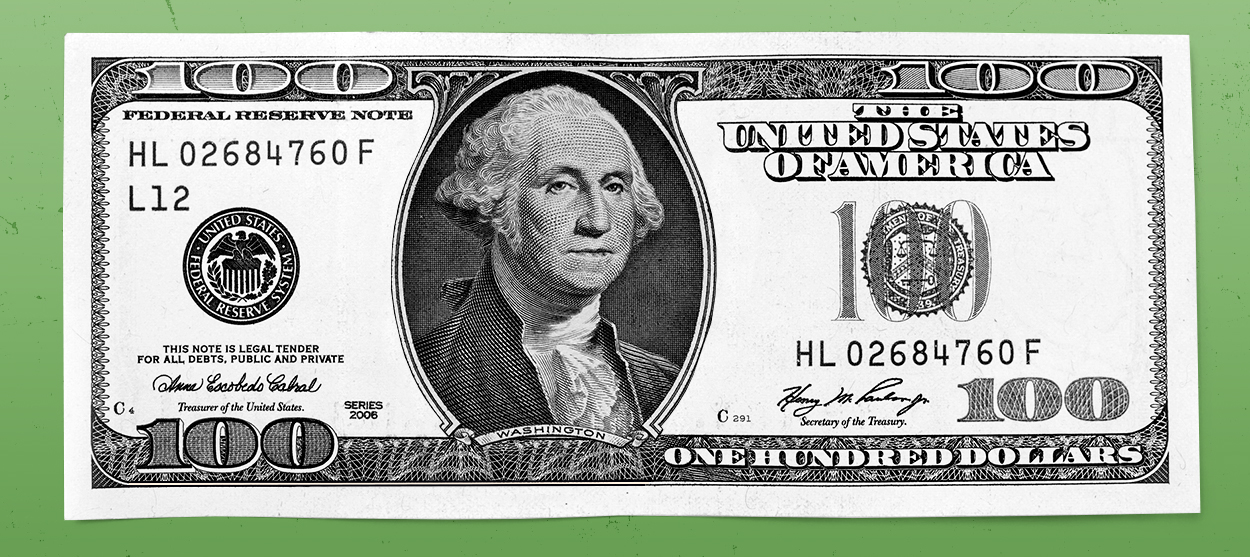The reality of American inflation
How cheap junk obscures the truth about our declining purchasing power


I cannot help finding it amusing that anxiety about "inflation" is making a comeback. Reading this article in Bloomberg brought me back to a period for which I never thought I would be nostalgic: i.e., 2008, an era I associate with Fleet Foxes (ugh), that awful Indiana Jones reboot, Ron Paul's campaign ads, and pseudo-genteel poverty. In those days it was widely assumed in right-wing media that Barack Obama's stimulus efforts in response to the financial crisis would lead the United States to Weimar-style hyperinflation, which mysteriously never happened. Apparently we are suffering through this again. What other throwback delights could be just around the corner? A new Guns N' Roses album?
The problem with our conversations about inflation is that they are premised upon an equivocation. When economists say, rightly, that stimulus policies undertaken in the last few decades have not led to widespread inflation, what they mean is that lowering of interest rates has not increased the supply of money enough to make the prices of goods rise faster than wages. This is, trivially speaking, accurate. But this does not mean that the American people have not experienced a decline in the purchasing power of money since 2008, or, indeed, earlier.
This is because it is entirely possible for purchasing power to decline without vast increases in the supply of money. The price of housing is the best example. As my former colleague Jeff Spross has observed, during the last decade the price of housing increased at a rate much higher than that of anything else. One scarcely needs figures to see that something that as recently as 1970 was within the reach of the average American household — purchasing a home — has become a fantasy for millions of people in my generation. This is especially the case in major metropolitan areas. All of this has taken place despite the fact that in the ensuing decades the vast majority of American families have become two-income households. Americans work more outside the home and have less to show for it than they did two generations ago. This may not technically be "inflation," but it is a serious problem about which we are doing nothing.
The Week
Escape your echo chamber. Get the facts behind the news, plus analysis from multiple perspectives.

Sign up for The Week's Free Newsletters
From our morning news briefing to a weekly Good News Newsletter, get the best of The Week delivered directly to your inbox.
From our morning news briefing to a weekly Good News Newsletter, get the best of The Week delivered directly to your inbox.
Less visible still but equally undeniable is what has happened in the last few decades with many consumer goods that have nominally kept pace with inflation while declining in quality. In 1980 a pair of Levi's, union-made in the United States from American cotton, cost $25 in a department store. It would be ludicrous to pretend that the equivalent purchase today would be a flimsily made pair stamped with the same brand name by wage slaves in Sri Lanka and sold for $40 on Amazon. More comparable to the Levi's of four decades ago are a pair of American Giant jeans made in Los Angeles and retailing for about $150.
This phenomenon — price increases that seem to track reasonably with inflation only because consumers are paying moderately higher amounts for products of vastly inferior quality by nominal brand successors — is ubiquitous. I was astonished recently to see a child's air rifle purchased at Walmart for around $50. The sturdy wooden stock of my youth had been replaced with some kind of particle board spray-painted brown and the cocking lever, once made of metal, was plastic and non-functional. In my grandparents' basement there is a Fisher Price music box that has been played with by three successive generations of my family. Two years ago I bought what I had assumed was a revival of the same toy online, only to discover that, unlike its purely mechanical ancestors, the new version requires two batteries. It ceased working altogether six months later.
All of this is to say nothing of technological fads — "smart" features poorly integrated into toasters and coffee makers — and planned obsolescence, both of which force Americans to spend more of their disposable income than their parents and grandparents had done in order to place phone calls or make toast. I cannot be the only person whose childhood was full of living rooms in which the same television sets — indestructible boxes with easily replaceable tubes inside them — seemed as permanent as the walls. Nowadays even technology-challenged senior citizens must replace the poorly made plastic rectangles every few years if they wish to continue watching Godfather II on AMC with motion smoothing.
There are vanishingly few affordable consumer goods of quality anymore. Instead we have cheap junk (nearly always concealed under familiar brand names) and luxury goods, with nothing in between. This is as true of audio equipment and cars as it is of suits and footwear.
A free daily email with the biggest news stories of the day – and the best features from TheWeek.com
Inflation may be a myth. That does not mean we are not all getting less for our money.
Want more essential commentary and analysis like this delivered straight to your inbox? Sign up for The Week's "Today's best articles" newsletter here.
Matthew Walther is a national correspondent at The Week. His work has also appeared in First Things, The Spectator of London, The Catholic Herald, National Review, and other publications. He is currently writing a biography of the Rev. Montague Summers. He is also a Robert Novak Journalism Fellow.
-
 Zimbabwe’s driving crisis
Zimbabwe’s driving crisisUnder the Radar Southern African nation is experiencing a ‘public health disaster’ with one of the highest road fatality rates in the world
-
 The Mint’s 250th anniversary coins face a whitewashing controversy
The Mint’s 250th anniversary coins face a whitewashing controversyThe Explainer The designs omitted several notable moments for civil rights and women’s rights
-
 ‘If regulators nix the rail merger, supply chain inefficiency will persist’
‘If regulators nix the rail merger, supply chain inefficiency will persist’Instant Opinion Opinion, comment and editorials of the day
-
 Bari Weiss’ ‘60 Minutes’ scandal is about more than one report
Bari Weiss’ ‘60 Minutes’ scandal is about more than one reportIN THE SPOTLIGHT By blocking an approved segment on a controversial prison holding US deportees in El Salvador, the editor-in-chief of CBS News has become the main story
-
 Has Zohran Mamdani shown the Democrats how to win again?
Has Zohran Mamdani shown the Democrats how to win again?Today’s Big Question New York City mayoral election touted as victory for left-wing populists but moderate centrist wins elsewhere present more complex path for Democratic Party
-
 Millions turn out for anti-Trump ‘No Kings’ rallies
Millions turn out for anti-Trump ‘No Kings’ ralliesSpeed Read An estimated 7 million people participated, 2 million more than at the first ‘No Kings’ protest in June
-
 Ghislaine Maxwell: angling for a Trump pardon
Ghislaine Maxwell: angling for a Trump pardonTalking Point Convicted sex trafficker's testimony could shed new light on president's links to Jeffrey Epstein
-
 The last words and final moments of 40 presidents
The last words and final moments of 40 presidentsThe Explainer Some are eloquent quotes worthy of the holders of the highest office in the nation, and others... aren't
-
 The JFK files: the truth at last?
The JFK files: the truth at last?In The Spotlight More than 64,000 previously classified documents relating the 1963 assassination of John F. Kennedy have been released by the Trump administration
-
 'Seriously, not literally': how should the world take Donald Trump?
'Seriously, not literally': how should the world take Donald Trump?Today's big question White House rhetoric and reality look likely to become increasingly blurred
-
 Will Trump's 'madman' strategy pay off?
Will Trump's 'madman' strategy pay off?Today's Big Question Incoming US president likes to seem unpredictable but, this time round, world leaders could be wise to his playbook
